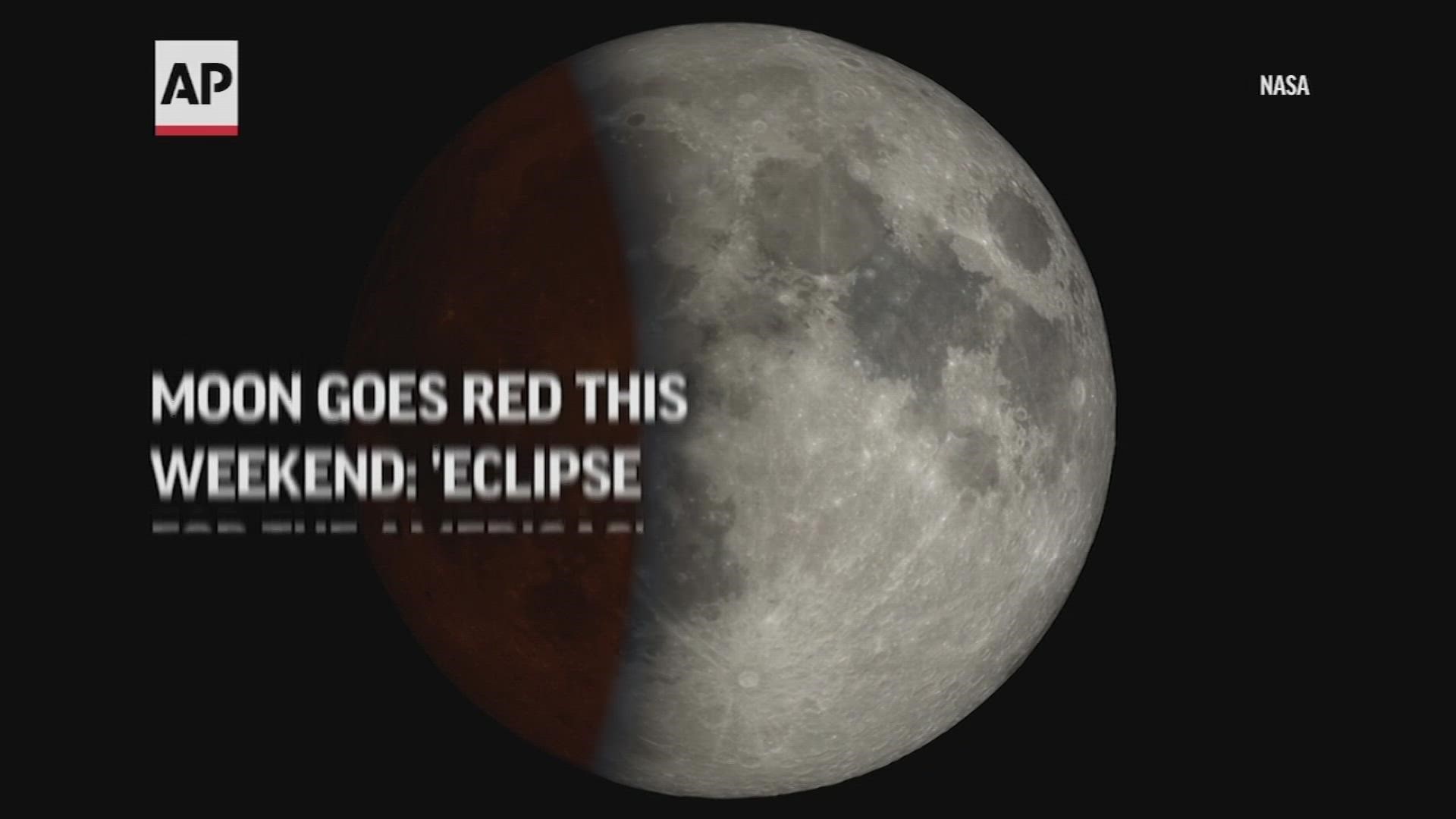MOLINE, Ill. — On Sunday, May 15, we saw a blood moon in the sky that was visible across the majority of the United States. If you missed out on the blood moon, don't worry; it's not the only one that will occur this year.
We can expect the next total lunar eclipse to occur on Monday, November 7, and into the early hours of Tuesday, November 8. The best areas to experience the blood moon will be on the west coast here of the United States, along with Australia and Southeast Asia.
The eclipse that occurred over the weekend was the most balanced eclipse that we have experienced in the past 430 years, lasting for 86 minutes; an unusually long time for an eclipse to last. On top of that, around 2.7 billion people witnessed this eclipse.
The last time an eclipse lasted that long was in August of 1989.
The total lunar eclipse that will occur in November is expected to be about the same length. The next eclipse that will top will occur on June 26, 2029, and should last for 109 minutes.
After November, we will wait an average of two and a half years before seeing our next total lunar eclipse. We will see an almost tetrad; when four consecutive eclipse seasons, which are about 6 months apart, contain a total lunar eclipse. The first total lunar eclipse of that season will occur on March 14, 2025, the second on September 7, 2025, the third on March 3, 2026, and lastly, a partial lunar eclipse on August 28, 2026.
A total lunar eclipse is when the Moon moves into the Earth's shadow, which requires the sun, Earth, and moon must be closely aligned. The reason why the moon turns a reddish or copper color is that the Earth is completely blocking direct sunlight from the sun, so the light that is reflected on the moon must come from refracted light coming off the Earth. The reason why it turns red is due to the scattering of light.
The shadow that Earth casts on the moon is divided into three parts: the umbra, penumbra and antumbra. The umbra is the deepest and darkest part of the earth’s shadow, while the penumbra is the lighter and outer part. The Antumbra is the lighter part of the shadow that begins where the umbra tapers off.
There are seven stages to a Total Lunar Eclipse:
- Penumbral eclipse begins – this is when the penumbral part of Earth's shadow starts moving over the moon. This is not seen easily by the naked eye.
- Partial eclipse begins – the Earth's umbra starts covering the moon, making the eclipse more visible.
- Total eclipse begins - Earth’s umbra completely covers the moon and the moon turns red, brown, or yellow
- Maximum eclipse – this is the middle of the total eclipse, and where we see the deepest and darkest part of the earth’s shadow. This is where the colors are the strongest.
- Total eclipse ends- the Earth's umbra starts moving away from the moon's surface.
- Partial eclipse ends – Earth's umbra completely leaves the moon’s surface
- Penumbral eclipse ends – The eclipse ends and the Earth’s shadow completely moves away from the moon.

